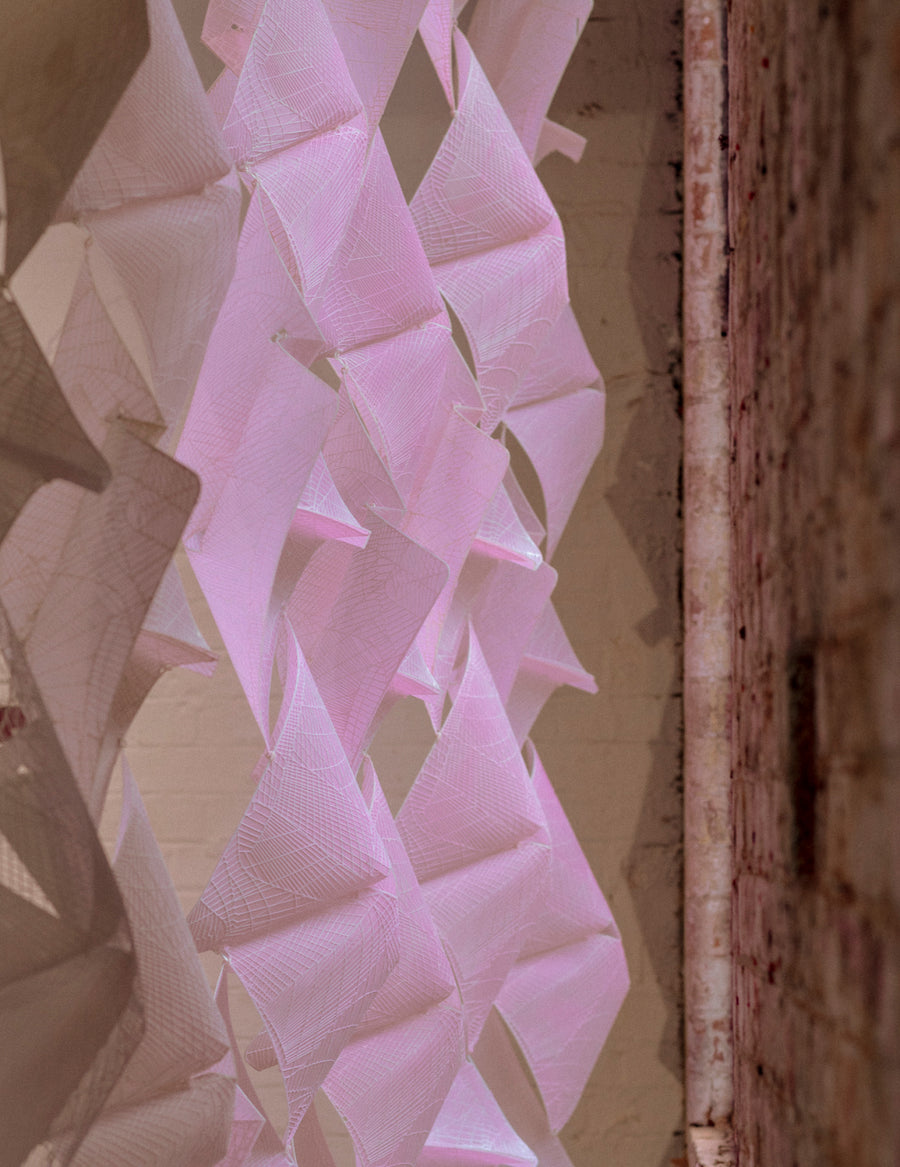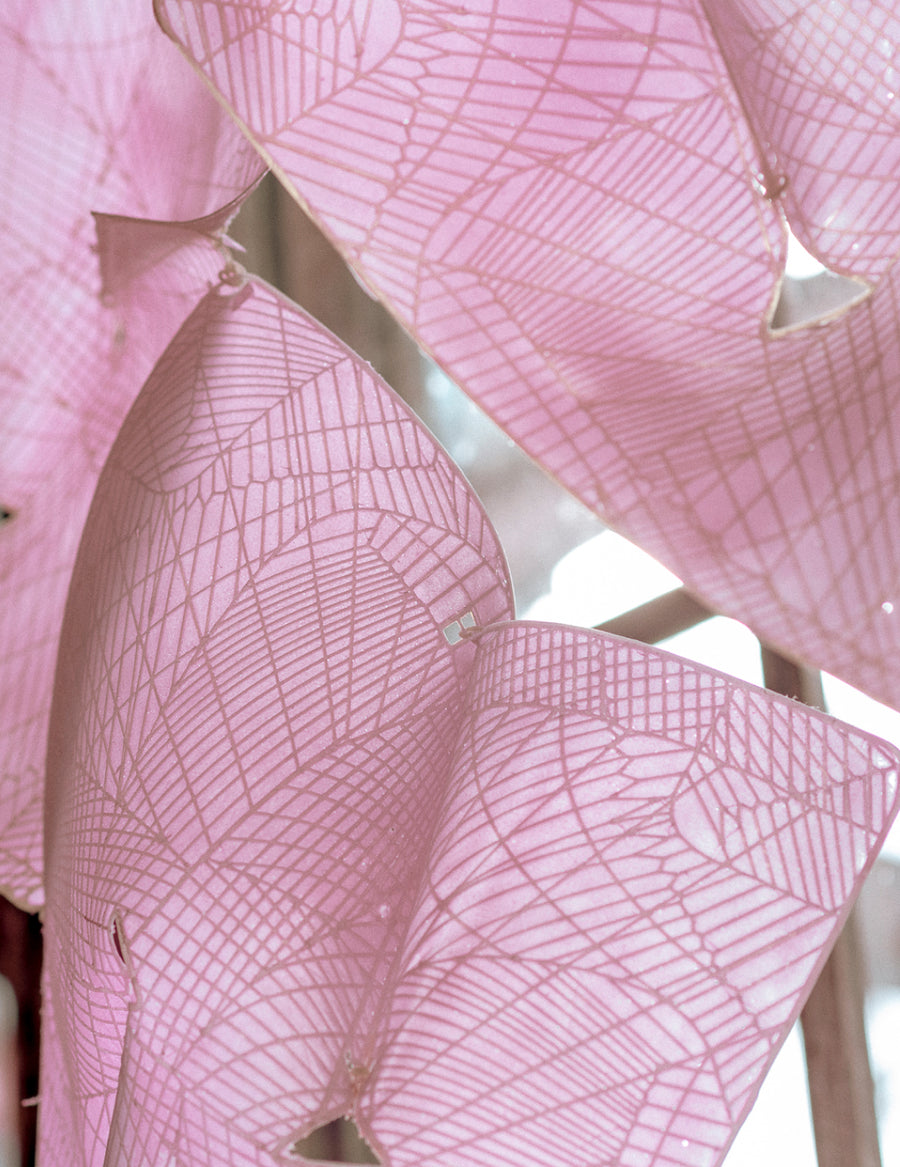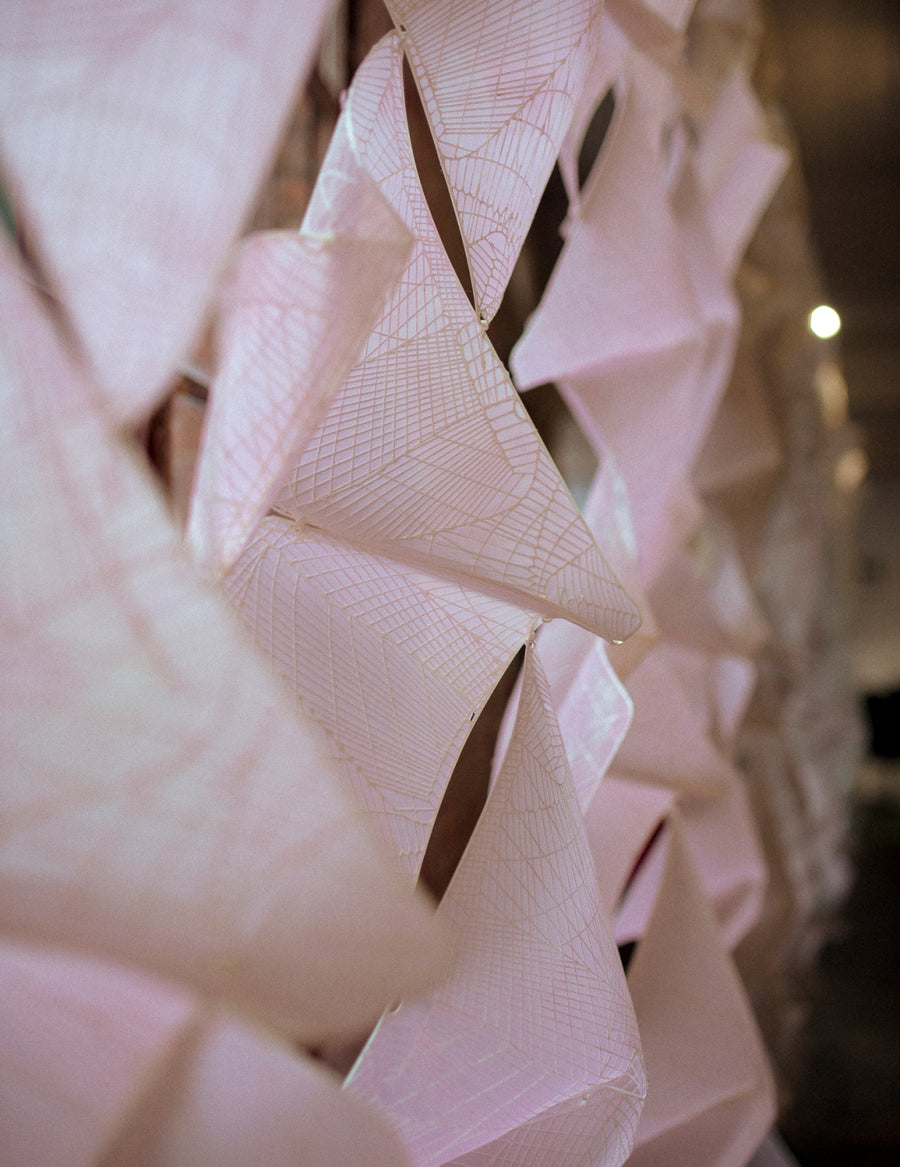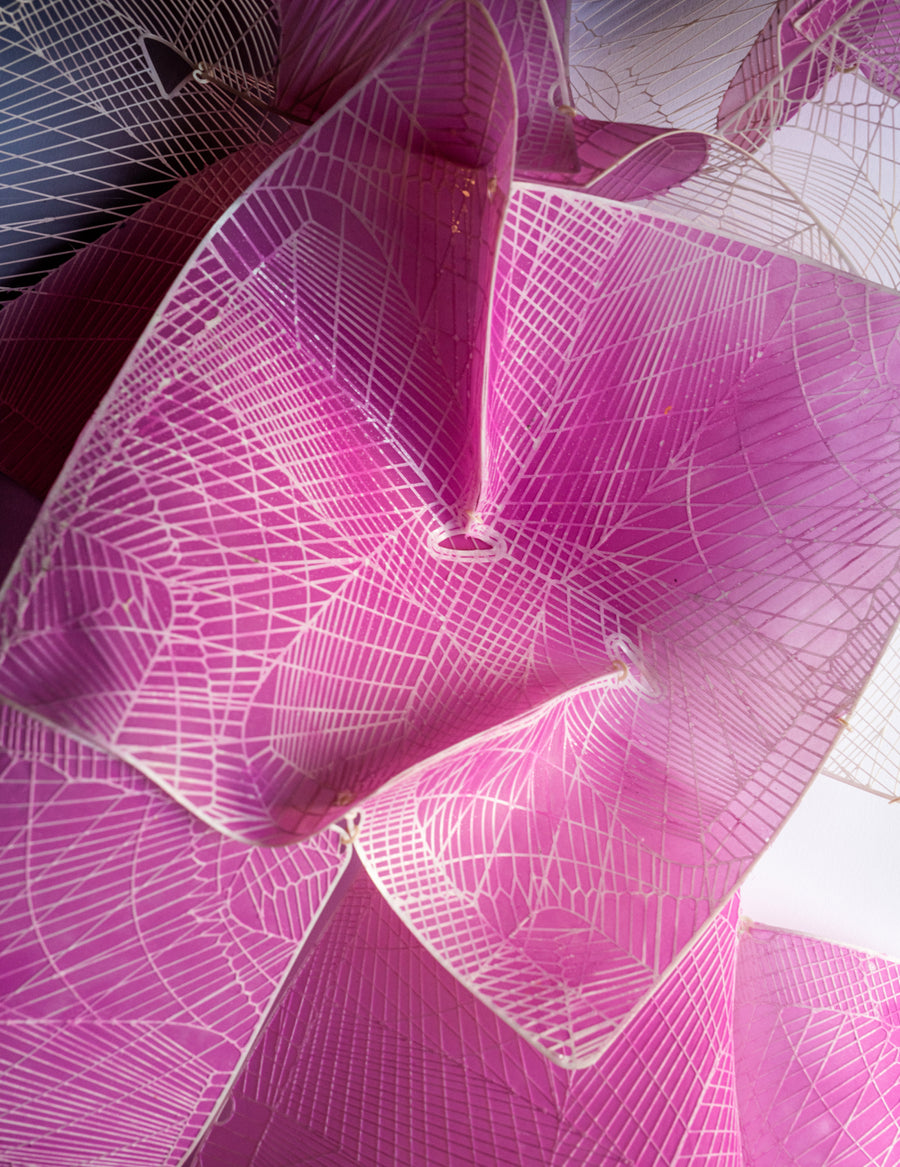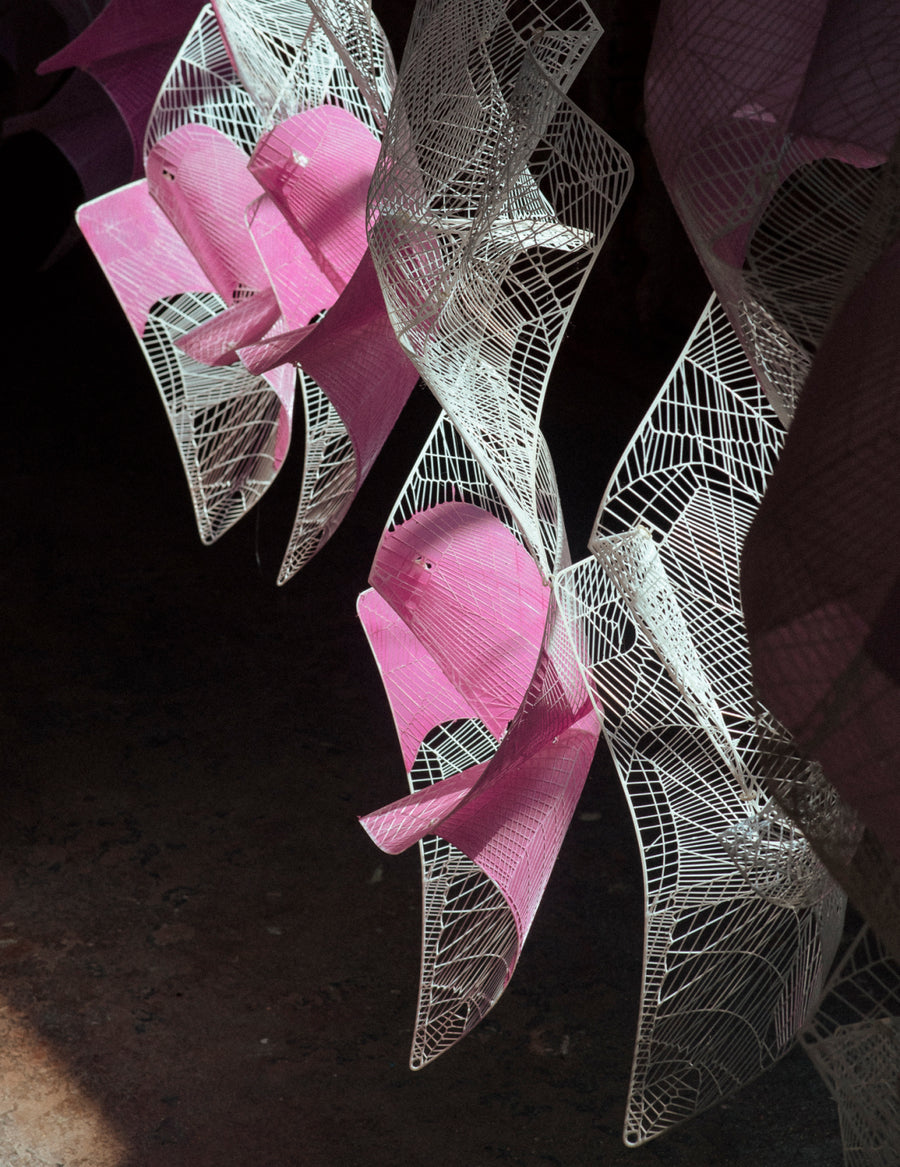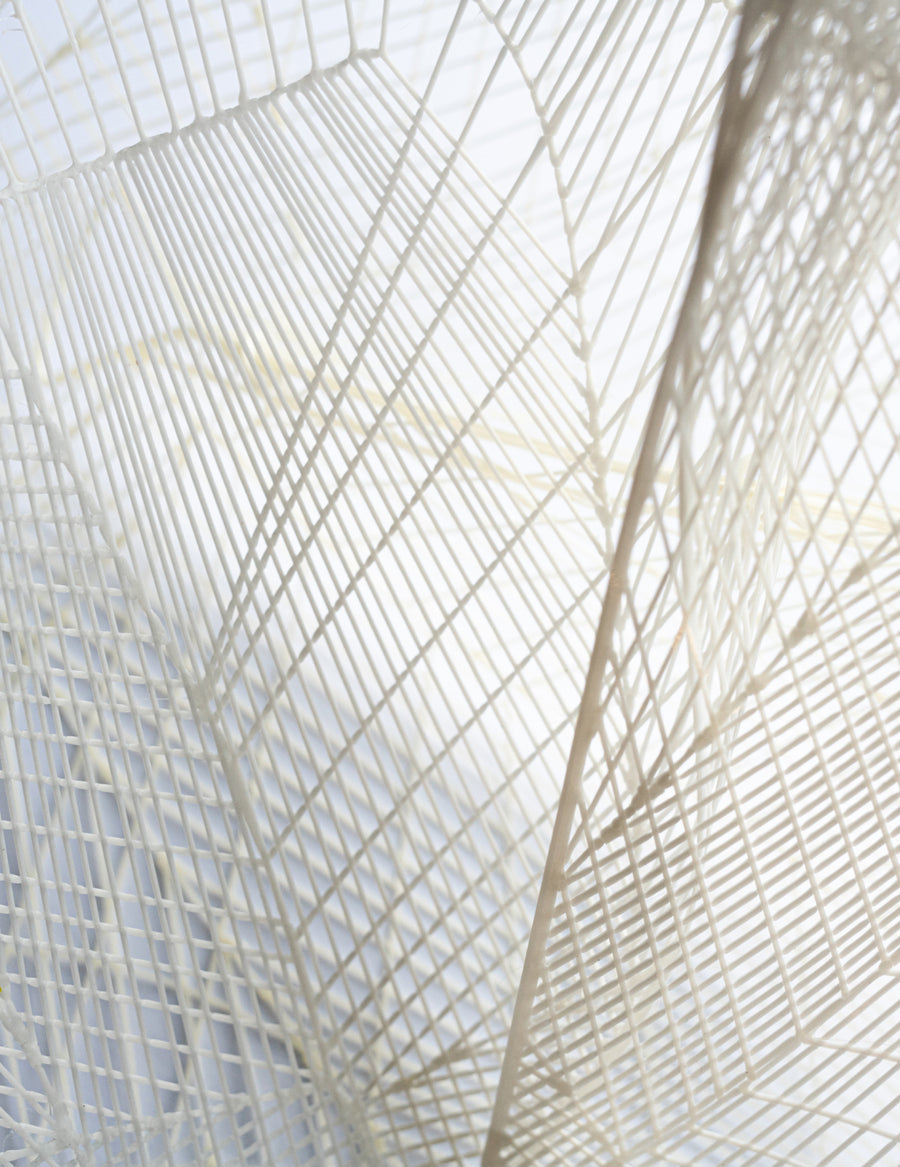Sensbiom 2.1
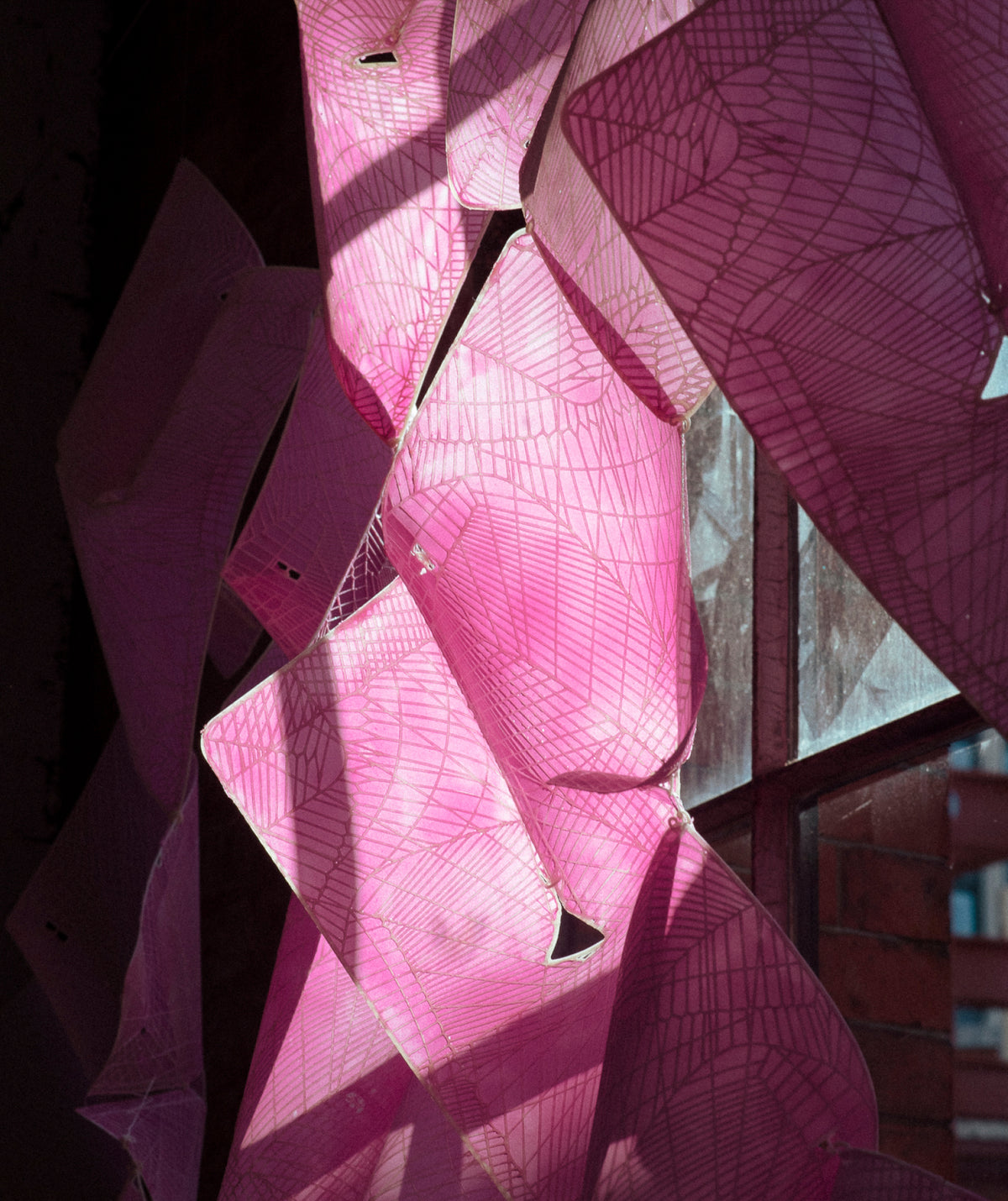
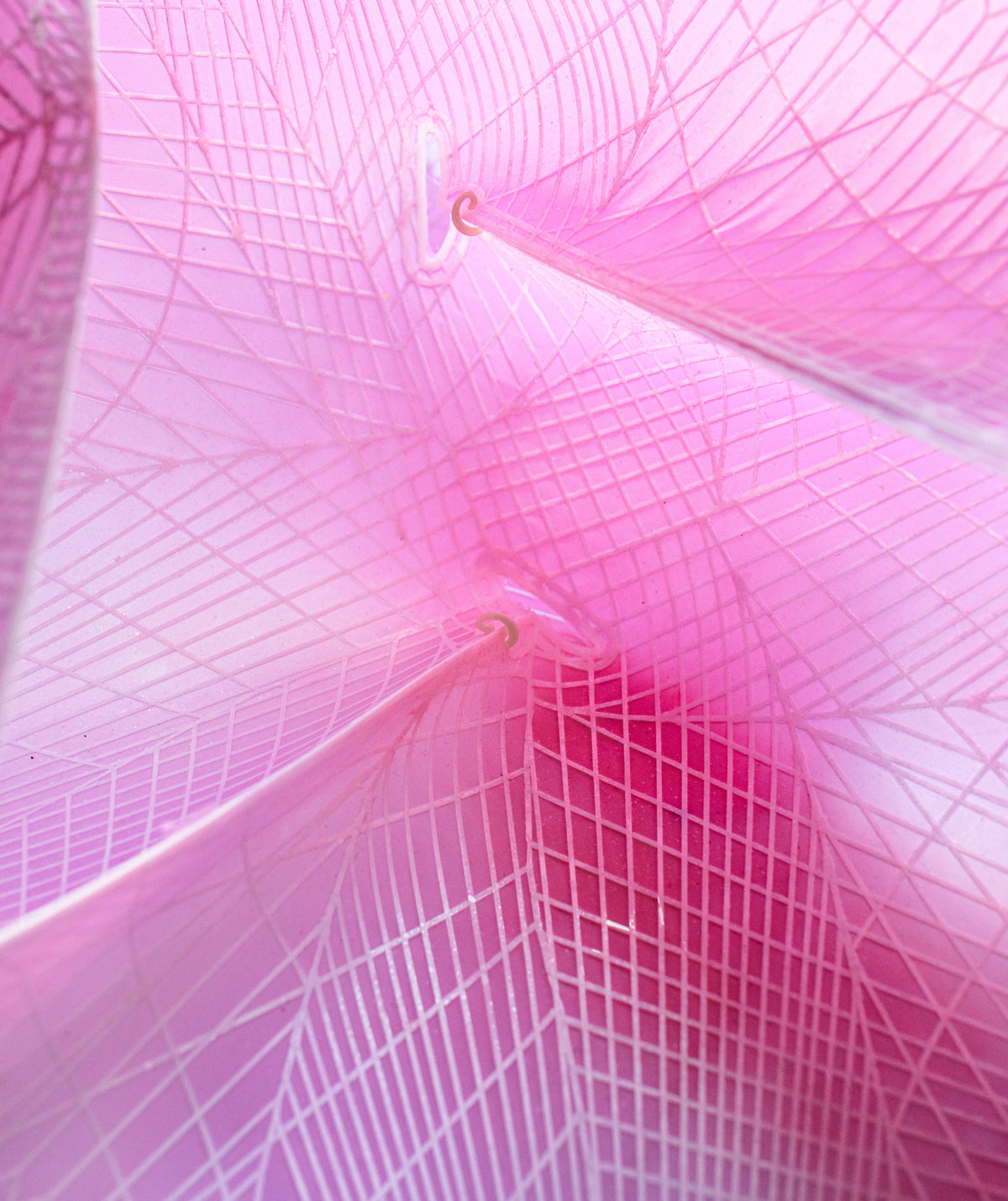
Year: 2023
Material: Nuatan®, UV-reactive bioskin
Sensbiom 2.1 is an environmentally-active installation created in collaboration with DumoLab Research. It envisions a future where everyday products are non-toxic and exhibit living-like properties, proposing indoor surfaces that can sense and react to their surroundings. The project was presented at Material Matters during the London Design Festival 2023.

Ultraviolet radiation (UVR), though invisible and intangible, can quickly harm skin and eyes. While UVR exposure is typically associated with outdoor spaces, standard clear glass in buildings, such as the Bargehouse Oxo Tower Wharf, allows most UV rays to pass through. Despite progress in reducing ozone depletion, climate change driven by fossil fuel consumption significantly contributes to rising UVR levels, which cause DNA damage to all living organisms.
In Sensbiom 2.1, a curtain of sensing lattices folds and twists, functioning as passive UVR detectors. Crafted from a Nuatan® bioplastic structure and environmentally-responsive biomaterial skin, the lattices self-stain based on UVR exposure. This real-time response highlights otherwise invisible solar radiation, raising awareness of threats that harm 3 million people's eyes and skin annually.
The installation asks critical questions:
- What is in the air we inhabit?
- Can materials signal what humans cannot see?
- How can they support our health amidst climate change?
- Could bio-composites help heal our relationship with nature?

Sensbiom 2.1. represents an ongoing research initiative at our studio and DumoLab Research. This multidisciplinary effort explores biochemically augmented, environmentally active biomaterials, fostering new connections between humans and the ever-changing environment.
